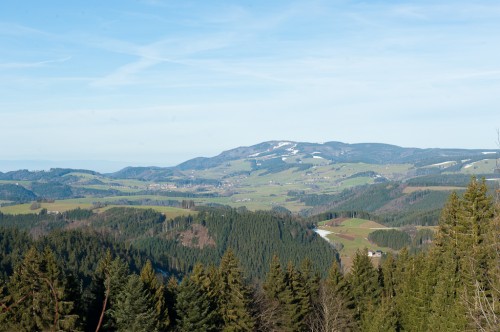
One of the many sweeping views
I’ve been intrigued with the fabled Black Forest for years. Maybe it was all the Grimms’ folk tales I loved as a child or maybe it was my sweet tooth piquing my interest in the famous chocolate gateau, but when my husband and I were seeking a Christmas destination this year, the Black Forest was an obvious, exciting choice. It was nearby, filled with countless festive German villages, endless hiking trails, lakes, castles and spa towns with restorative springs. Perfect!
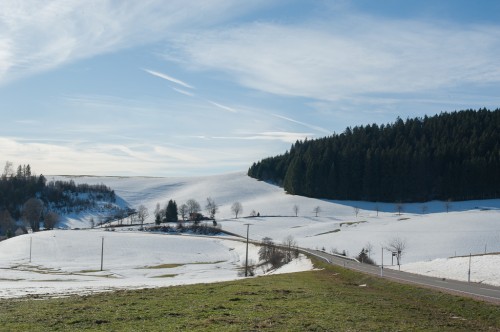
A winding road through the forest
So, what exactly is The Black Forest? It is a thickly wooded mountain range in southwest Germany where stunningly tall pine and fir trees sit atop granite and sandstone mountains. The whole area is 200 km long by 60 km wide.
If the name “Black Forest” sounds creepy, that’s because it was. The Romans gave the Black Forest its name (actually, they called it “silva nigra”) because the vast, dense trees blocked out so much light. Back in Roman times, the forest was intimidating and impenetrable, with its imposing trees and deep valleys. At that point, only the highest mountains, the Hornisgrinde and the Feldberg, could be seen above the trees. The steep slopes and dark valleys gave rise to legends about magical beasts, evil witches, water nymphs and other mystical beings.
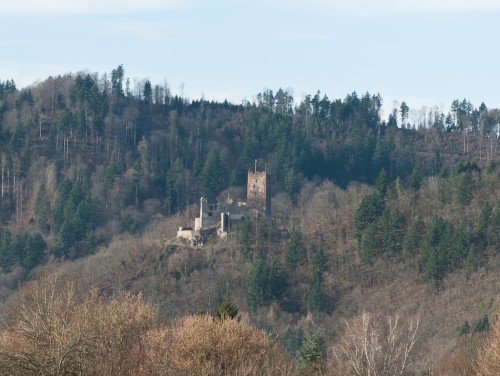
A castle tucked away on a mountain
After the Middle Ages, things changed a bit as demand for lumber grew. What better place to go than the forest with a seemingly unlimited supply of trees? Lumberjacks got busy thinning out the forest and sending the huge trunks down the Rhine to supply the glass-making and mining industries. By the 17th century, many sections of the forest were devastated and the remaining communities impoverished. Today, some of the trees have been replenished and vast meadows have developed in the clearings.
The most typical images of the Black Forest are the multi-pom-pommed Bollinghut hats and extravagant cuckoo clocks. Since the 18th century, clock-making has been a regional specialty.
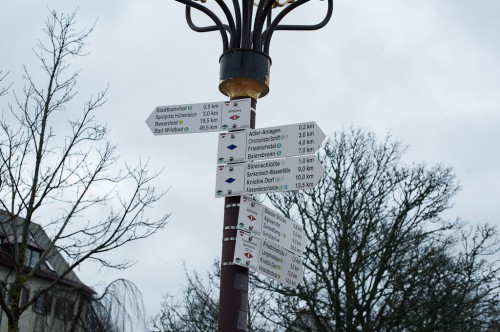
The well-marked trail system is everywhere
Another specialty is hiking, cycling and skiing. There are over 23,000 km of hiking trails and 8,000 km of biking trails. This area was the first place in Central Europe to introduce skiing, both downhill and cross-country.
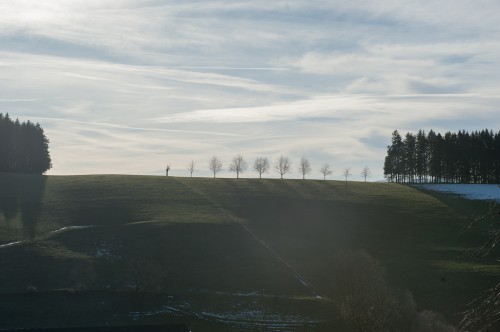
A line of much smaller trees
Then there are the springs. The Romans first discovered the invigorating hot springs and touted them as a cure for, among other ailments, gout and rheumatism. By the 19th century, the restorative mineral waters attracted aristocracy and tourists from all over.
Unfortunately, we did not have time to see as many villages and sample as many activities as we’d hoped. The weather was rainy and cold and there was no fresh snow. However, this is an area with many possibilities, so we’re already planning a return trip.
From Luxembourg, the Black Forest is about 2.5 hours away. There are numerous entry points; we chose Baden-Baden so that we could then drive down the Black Forest Highway to Freudenstadt.
6 Responses to Schwarzwald, or The Black Forest